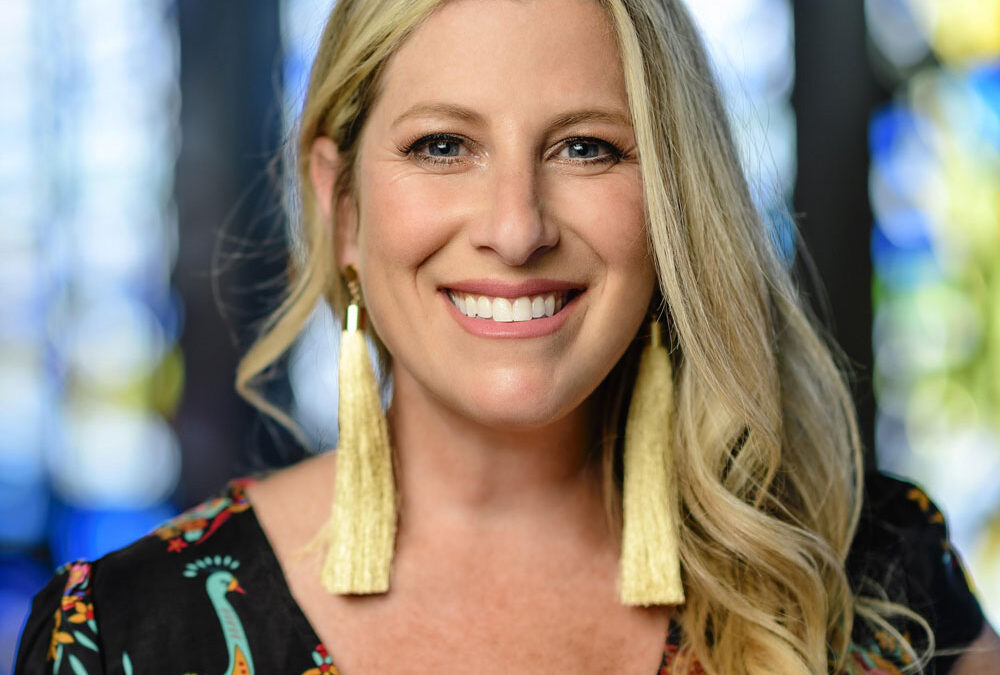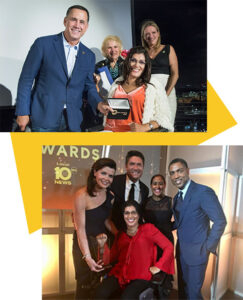Breaking Barriers: Part 1
As the new Executive Director of the Sabrina Cohen Foundation, I am gaining knowledge about disabilities, inclusion and accessibility every day. I am an able-bodied woman leading an organization committed to putting lives back into motion by developing adaptive fitness and recreational programs, in addition to funding innovative therapies that will provide a better quality of life for individuals living with paralysis and various disabilities.
Over the last six months I have spent nearly every day interacting with our Founder Sabrina Cohen along with participants from our organization. Through my honest interactions with Sabrina and many others in our program, along with my own research, I have begun to gain an understanding of what inspires, frustrates and segregates individuals with disabilities.
I was startled to learn that roughly 29 % of Miami-Dade residents are living with a disability, the second highest percentage in the US. This includes but is not limited to children with autism, veterans, the aging population and people who were injured or born with a physical or intellectual disability. This accounts for more than 1 in 4 people in our beloved County, many of whom are overlooked and underserved.
As someone new to working for an organization that supports people with disabilities and promotes inclusion and accessibility, I feel proud and inspired to take what I have learned in this short time and help to educate people of all abilities with basic tips to empower connection and remove insecurities when interacting with one another. I don’t claim to be an expert by any means but here are my key take-aways from the first three months into this journey.
- Someone without a physical disability should be referred to as an able-bodied person, rather than a normal or regular person.
- When speaking with or writing about someone with a disability, put the person first, not the disability. For example, Buddy has a physical disability and uses a wheelchair. Or he has a physical disability.
- Offer to hold the door open or move your chair for someone to pass through. This is a courtesy that you would likely offer to a mother with a stroller, or someone using crutches. There is no need to make a big fuss or assume help is needed. Simply offer help and respond accordingly.
- If someone has a loss of mobility in their hands or is missing a limb, what’s the most appropriate way to greet them? Hand shake? Fist bump? Elbow bump?
- Ask the person what they are comfortable with, take cues from the individual and maintain an open mind-set and relaxed demeanor. It’s best not to assume you know what feels right for an individual without asking them first, especially in the time of COVID, as this community is particularly vulnerable.
- Make authentic compliments. If you are inspired by someone’s story, it’s ok to tell them they are brave. If you are having a meaningful conversation, you can ask someone to share what happened or why they are using a wheelchair. Stay away from making comparisons that can be unproductive or cause anger.
- If you have authentic advice or an observation to share, ask if you can share it.
- It’s important to understand that emotional and physical limits exist for everyone. We should respect each individual’s personal fitness level. For persons living with a disability, Adaptive Fitness is key to their health. It is a modified exercise, to one’s specific abilities. It also refers to using specialized machines, equipment, targeted exercises and expert trainers/ physical therapists that are best educated for a wide range of disabilities. Examples include: Wrist weights instead of hand weights, wheelchair accessible machines, seated cardio, strengthening and conditioning, dance therapy and more…
- A person with a disability is a human being with physical, emotional and spiritual needs. Ask real questions and don’t make people feel shunned from society. People with disabilities desire all of the same things as able-bodied people and want to feel included. Ask real questions like, are you married? Do you have children? What do you do for work? Engage, connect.
- People with disabilities tend to be creative problem-solvers due to the nature of navigating around issues and everyday challenges. Whether at work or in a social setting, take the time and get to know someone and ask if they can or want to participate or take on a specific challenge.
- Fitness and mental health are critical to maintain wellness. For people living with disabilities prioritizing fitness and wellness is more than a quality-of-life decision. It is vital to avoid physical or psychological complications related to their condition. Without it, a simple cold can become dangerous.
My goal as a leader for the SCF is to help educate and empower others to communicate and interact with people of all abilities comfortably and confidently, and to understand that everyone is an individual and has their own unique reactions and experiences. It’s important to be patient, kind, understanding, loving and the best version of yourself for you and for others.
As I continue to learn more and advocate for individuals with disabilities, I am committed to sharing my experiences through this Breaking Barriers Series. My hope is that my observations will give others more confidence to focus on building meaningful relationships with people of all abilities.
In the great words of the Dalai Lama XIV, “Only the development of compassion and understanding for others can bring us the tranquility and happiness we all seek.”
Stacey Glassman Mizener
Executive Director
Sabrina Cohen Foundation

